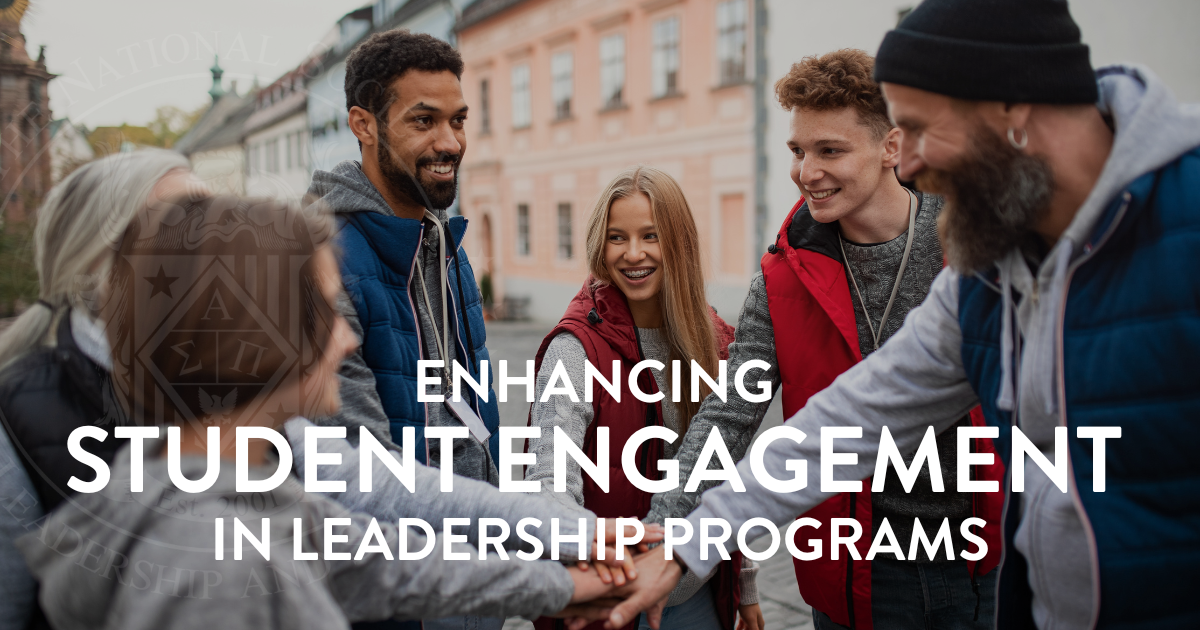Discover effective strategies to enhance student engagement in leadership programs and create a more dynamic learning environment.
Understanding the Importance of Student Engagement in Leadership Programs
Student engagement plays a crucial role in leadership programs as it fosters active participation and promotes a dynamic learning environment.
When students are engaged, they are more likely to have a sense of ownership and take responsibility for their own learning journey. This results in increased motivation, higher levels of participation, and a deeper understanding of leadership concepts and skills.
Educators can create an environment that encourages critical thinking, problem-solving, and effective decision-making by actively engaging students in leadership programs. Engaged students are more likely to apply their learning to real-world situations and develop practical leadership skills that can be transferred to various contexts. Additionally, student engagement enhances collaboration and teamwork, which are essential to effective leadership.
In summary, understanding the importance of student engagement in leadership programs is crucial for creating a vibrant and interactive learning environment that promotes the development of essential leadership skills.
Implementing Interactive and Collaborative Activities
One effective strategy for increasing student engagement in leadership programs is implementing interactive and collaborative activities. These activities allow students to actively participate in their own learning and engage with their peers.
Interactive activities include group discussions, case studies, role-playing exercises, and simulations. These activities provide students with hands-on experiences and practical opportunities to apply leadership theories. By actively participating in these activities, students can develop critical thinking skills, problem-solving abilities, and effective communication techniques.
Collaborative activities, such as group projects and team-based assignments, foster teamwork and cooperation among students. These activities encourage students to work together, share ideas, and take on different roles within the group. Through collaboration, students can learn from each other's strengths and weaknesses, enhancing their overall understanding of leadership.
By implementing interactive and collaborative activities, educators can create a dynamic learning environment that promotes student engagement and encourages the development of essential leadership skills.
Utilizing Technology to Enhance Student Interaction
In today's digital age, utilizing technology can be an effective way to enhance student interaction and engagement in leadership programs. Technology provides various tools and platforms that facilitate communication, collaboration, and active learning.
One strategy is to incorporate online discussion forums or virtual learning platforms where students can engage in meaningful discussions, share ideas, and ask questions. These platforms provide a space for students to connect with their peers and expand their understanding of leadership concepts through online interactions.
Another way to utilize technology is by incorporating multimedia elements, such as videos, interactive presentations, and online quizzes. These multimedia resources can make the learning experience more engaging and interactive, allowing students to explore leadership concepts in a visually appealing and interactive manner.
Additionally, educators can leverage social media platforms to create online communities and facilitate ongoing discussions and interactions related to leadership. By utilizing technology effectively, educators can enhance student interaction and engagement, making leadership programs more dynamic and interactive.
Encouraging Peer-to-Peer Learning and Mentorship
Peer-to-peer learning and mentorship can significantly enhance student engagement in leadership programs. By creating opportunities for students to learn from their peers and engage in mentorship relationships, educators can foster a supportive and collaborative learning environment.
One strategy is to incorporate peer-led discussions or group activities where students can learn from each other's experiences and perspectives. This allows students to develop a deeper understanding of leadership concepts by engaging in meaningful conversations and sharing their insights.
Another approach is to establish mentorship programs where experienced student leaders can mentor and guide their peers. Mentorship provides a valuable opportunity for students to receive personalized guidance, support, and feedback from those who have already demonstrated leadership skills and expertise.
By encouraging peer-to-peer learning and mentorship, educators can create a sense of community and collaboration within leadership programs, leading to increased student engagement and the development of strong leadership skills.
Measuring and Evaluating Student Engagement for Continuous Improvement
It is essential to measure and evaluate the effectiveness of leadership programs to ensure continuous improvement in student engagement. By collecting data and feedback, educators can identify areas for improvement and make necessary adjustments to enhance student engagement.
One approach is to conduct surveys or interviews to gather student feedback about their leadership program experiences. This feedback can provide valuable insights into the effectiveness of current strategies and identify areas where improvements can be made.
Additionally, educators can track attendance, participation rates, and student performance to assess the level of engagement in the program. Analyzing this data can help identify patterns and trends that indicate the effectiveness of different strategies and activities.
Furthermore, ongoing reflection and self-assessment can be valuable tools for students to evaluate their own engagement and identify areas for improvement. By encouraging students to reflect on their learning journey, educators can foster a sense of responsibility and ownership for their engagement in the program.
By continuously measuring and evaluating student engagement, educators can make data-informed decisions and implement strategies that enhance student participation and create a more dynamic learning environment in leadership programs.



